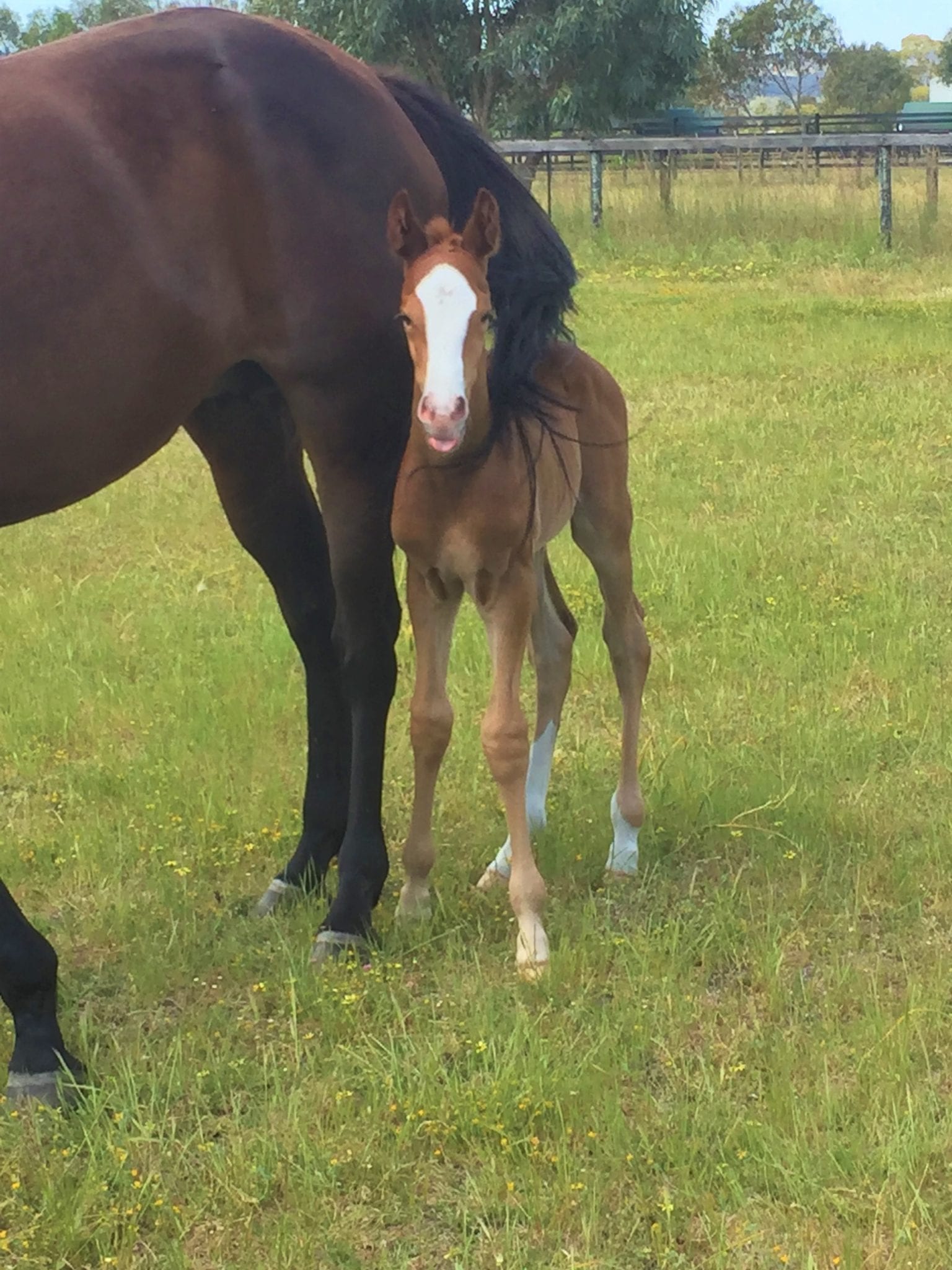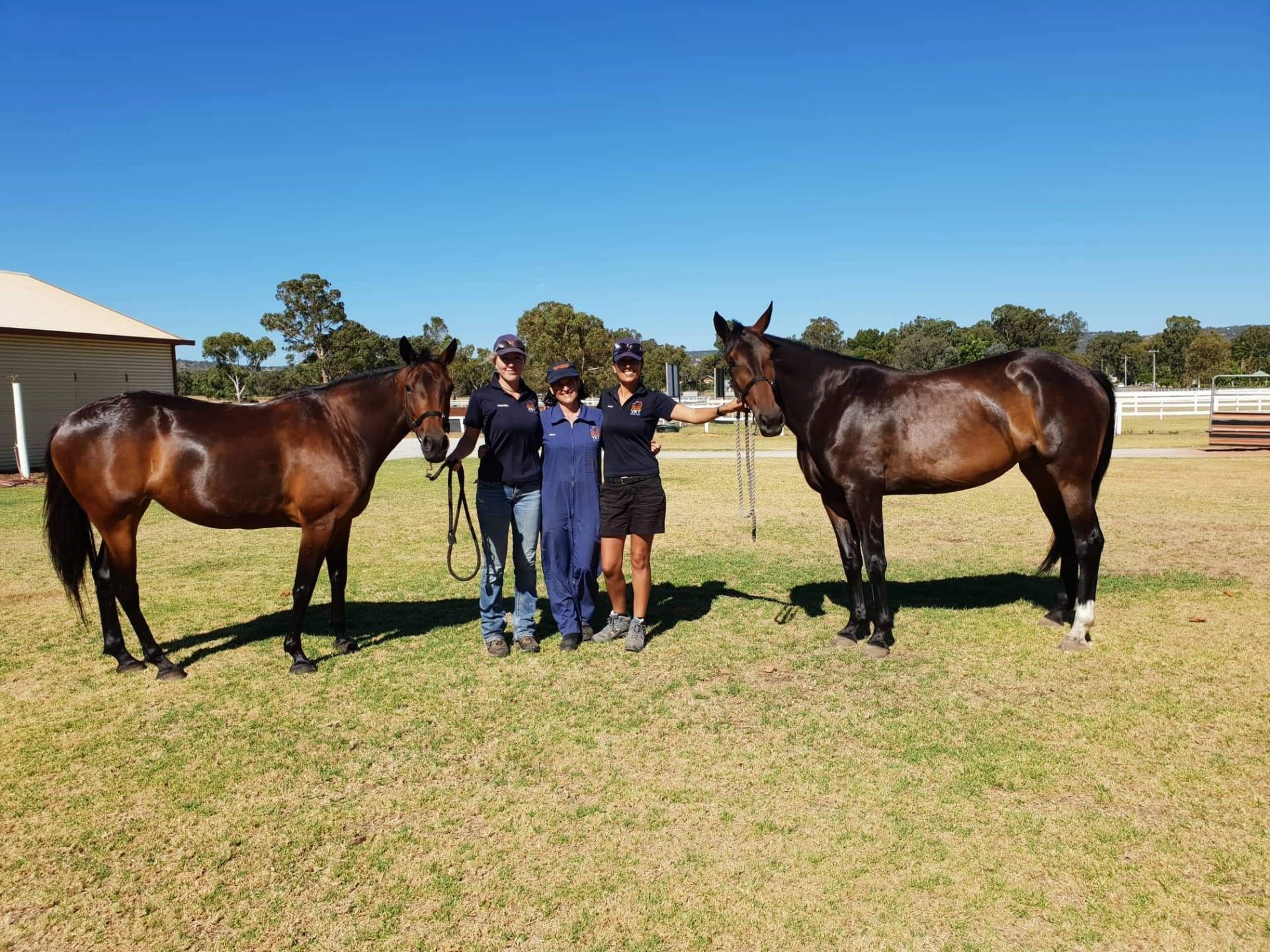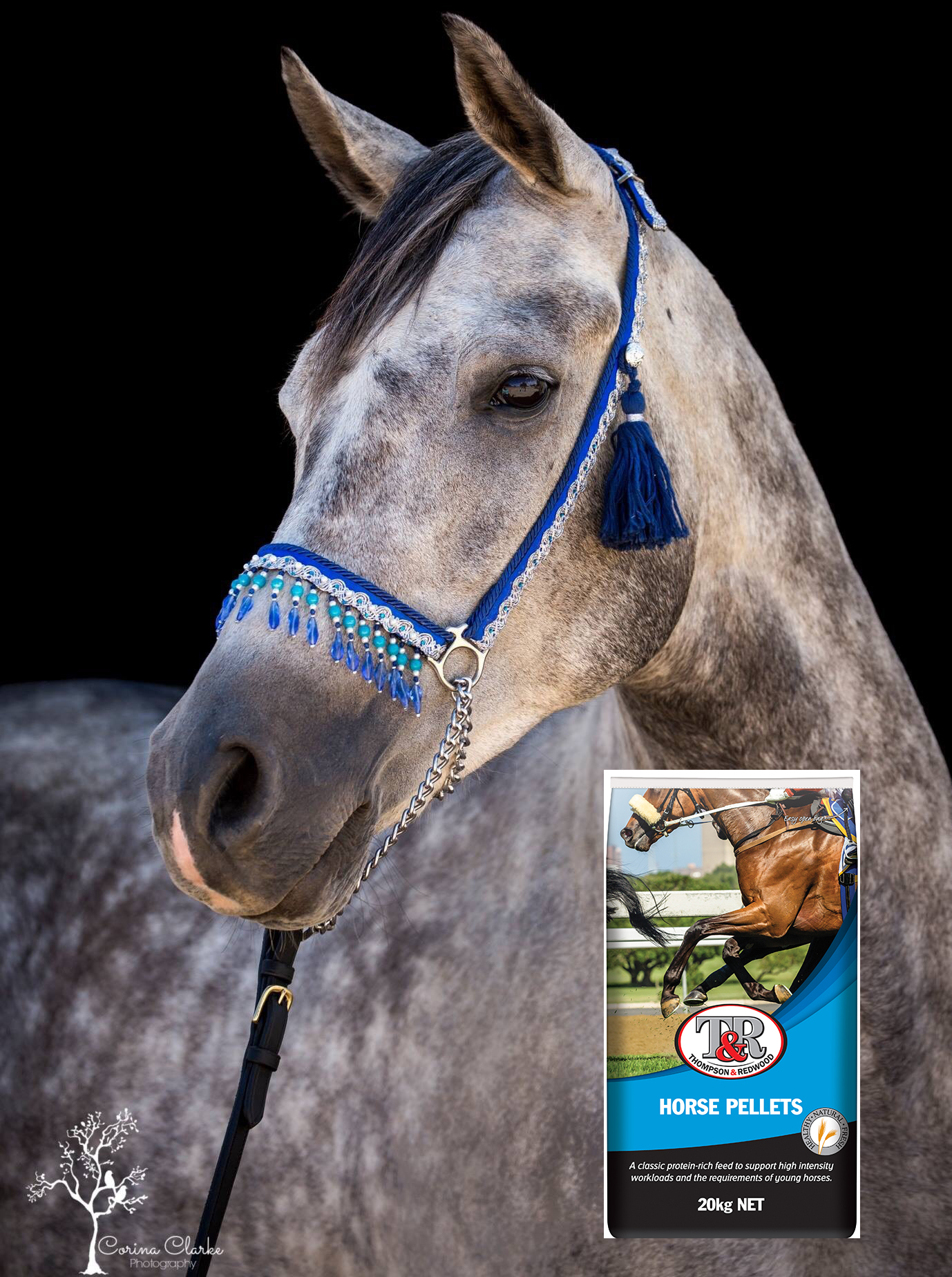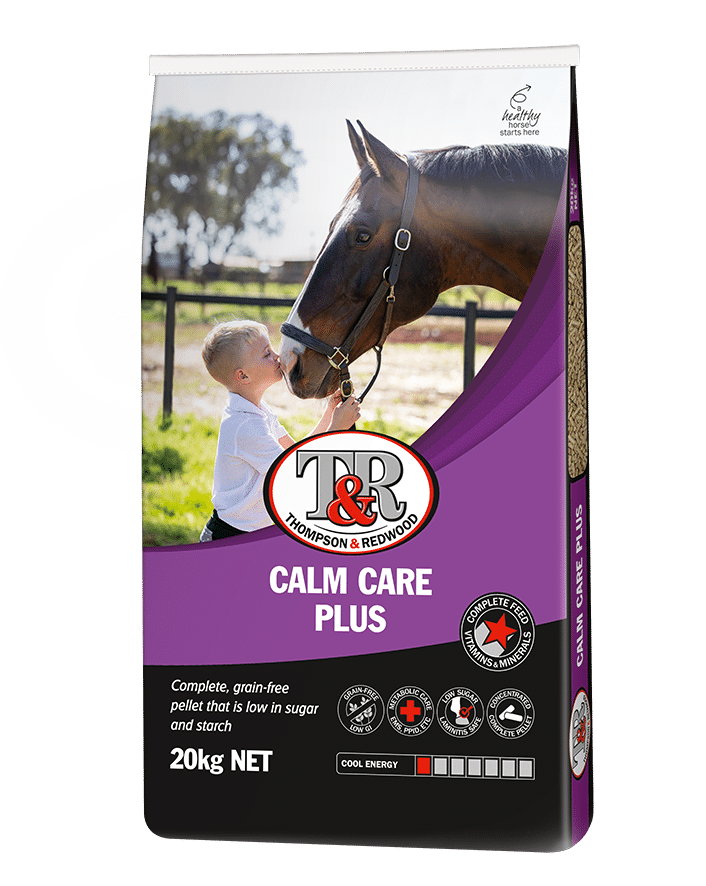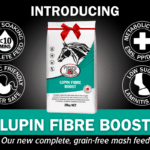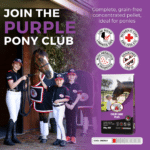
From grass roots to high performance, we have an equine feed to suit
A feed for (almost) every animal on the farm
Quality
Ruminant feeds to support productivity
We’re passionate about poultry
superior feed for broodmares, young stock & commercial studs
with added pre & probiotics
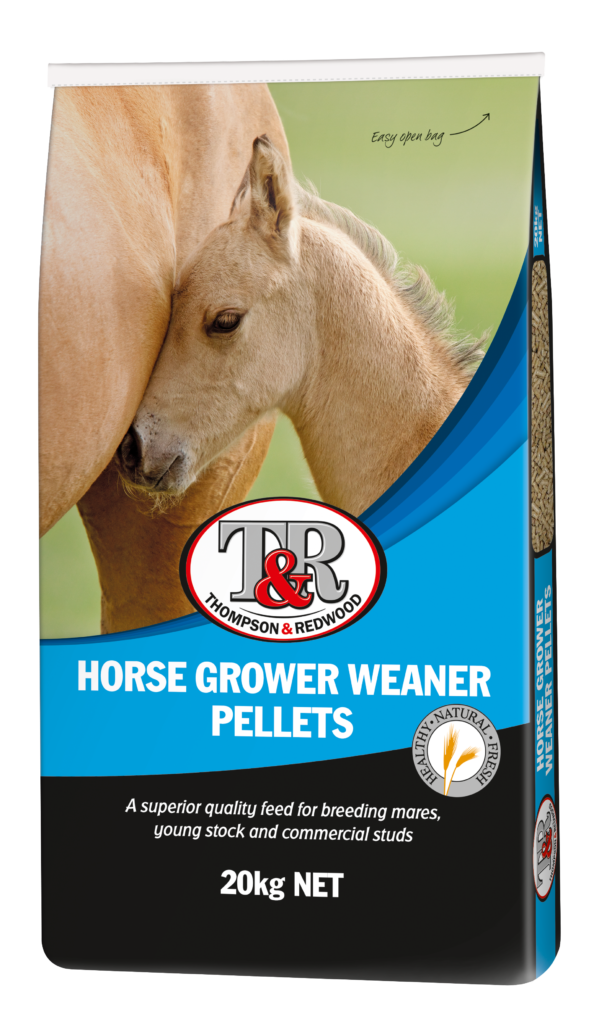
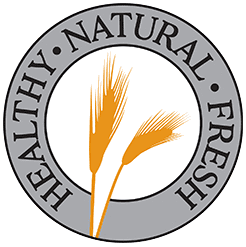
Making healthy, natural and fresh stock feed since 1985
Thompson & Redwood makes affordable and nutritionally balanced stock feed for the horse and agricultural
industries. Our recipes never change and are milled daily from Western Australian grain so you know what
you’re feeding is healthy, natural and fresh.
What's your
horse feeding challenge?
- Fizzy horse?
- Poor keeper?
- At risk of laminitis?
Let our veterinary and nutrition team support you and your horse with our carefully formulated complete horse feeds.
Find the feed most suited to your horse or pony.
What's your
horse feeding challenge?
- Fizzy horse?
- Poor keeper?
- At risk of laminitis?
Let our veterinary team support you and your horse with our carefully formulated complete horse feeds.
Find the feed most suited to your horse or pony.
Horse on pasture? Be aware of potential nutritional gaps.
Many paddocks at this time of year don`t have enough grass and can be missing some of the essential nutrients needed to meet their daily requirements. Even if they are fed hay, it may not have the amino acids, vitamins and minerals they need for good health, conditioning and function.
Lupin Fibre Boost is a fibre-based complete feed, that can improve the fibre diversity in their diet while helping to fill nutritional gaps for horses on pasture. Containing our targeted equine vitamin and mineral premix, plus pre & probiotics it`s ideal for horses that don`t need full hard feeds.
✅ Complete feed
✅ Ultra-low in sugar and starch
✅ Highly digestible fibre
✅ Quick-soaking mash (in under 10 minutes)
✅ Contains quality proteins and amino acids which can be lacking in pasture at this time of year
✅ Balanced vitamins and minerals
✅ Added pre & probiotics
✅ Highly palatable and digestible
✅ Low feeding rates and cost-effective
Available at your local WA stockist.
#lupinfibreboost #pasturegap #nutritionalgap #boost #equinenutrition #horsefeed #horsemash #fibremash #natural
May 20

FEED TIMING - Should you feed before or after you ride? And how should you time it?
Getting the timing of your horse’s feeds right can optimise digestion, promote gut health, and avoid digestive issues like ulcers. Timing your feeds well depends on what you are feeding and the exercise your horse is doing:
𝗙𝗲𝗲𝗱𝘀 𝗯𝗲𝗳𝗼𝗿𝗲 𝗿𝗶𝗱𝗶𝗻𝗴:
✅ DO allow access to grazing or forage as close to riding as you can
✅ DO feed a small amount of lucerne hay or chaff directly before you ride
Horses ideally should have ad lib access to forage or hay right up until they are worked but you can help prevent ulcers by using a small feed of lucerne chaff or hay prior to work to avoid acid splash. Chewing this helps to stimulate saliva which acts as an acid buffer in the stomach. The forage also helps to create a ‘cap’ on top of the acid.
❌ AVOID hard feed within 1 hour and up to 4 hours before riding, depending on feed type and exercise
❌ AVOID hard feed within 4-5 hours of strenuous exercise
❌ AVOID hard feeds high starch or sugar feeds within 4-5 hours of exercise
Why? The starches and sugars end up as glucose in the bloodstream which triggers the release of insulin – the hormone that tells the body to store glucose. If there is still insulin in the blood when exercise starts, the horse can’t mobilise its glucose stores to fuel the muscles during work, and they will run out of energy supplies and fatigue quickly. 3-5 hours is the time it takes for blood glucose and insulin levels to return to normal.
𝗙𝗲𝗲𝗱𝗶𝗻𝗴 𝗮𝗳𝘁𝗲𝗿 𝗿𝗶𝗱𝗶𝗻𝗴:
✅ Offer hard feed within 1 hour of finishing work if possible.
Allow them to cool down and let their respiration and pulse return to normal. The gut will be better able to take the glucose from the starch and move it into the muscle as a fuel source and fibre will move more efficiently into the hindgut for correct fermentation to produce volatile fatty acids for muscle fuel.
If you can`t optimise the timing of feeds, the most important thing is to ensure they have some fibre or forage in their stomach before you ride.
#tiptuesday #horsefeed #horsenutrition #horses #performancehorses
May 20

Thanks for having us @apex.barrel.racing! We had a fantastic time in Karratha, meeting new people (and horses) and watching this positive and supportive community come together for their clinic and Red Dirt Jackpot.
Well done to all the riders and the organisers for such a fabulous event.
#barrelracing #topend #karratha #rodeo #horses #horsesport #australia
May 19

"In all honesty I thought your new calm horse pellets where another pellet in a fancier bag and a marketing grab...
My big fella has struggled with food sensitivity and ulcers from birth - this is the happiest and best I’ve ever seen him - he gallops up to me every morning and his coat shimmers at night!
That photo was full moon no lights or flash!" - Customer Kat Rowe
Calm Care Plus is not just any pellet in a bag. We`ve carefully formulated with natural, locally grown ingredients to give horses nutrition that makes a difference...especially to horses with sensitive stomachs or conditions needing special care.
#calmcareplus #lowsugarandstarch #specialcarefeed #horseulcers #sensitivehorse #horsenutrition
May 16

⭐️ WELCOME TO THE TEAM MILAN ⭐️ Milan Dvorak is our newest Junior Ambassador, and he and his mum Nicole have a super team of ponies. Milan loves his ponies, and has just returned from the east coast after a successful Sydney campaign with `Hashtag`.
Milan looks after his ponies carefully, and they are produced on our Lupin Fibre Boost and Calm Care Plus. You might even recognise Milan from the front of fhe bags. Welcome Milan, we`re so happy to have you on board.
#juniorambassador #fuelledbytandr #horsefeed #showpony #horsenutrition #lupinfibreboost #calmcareplus
May 14

OH POO! What can it tell you about your horse`s health?
It might be a messy subject, but it`s an important one! We pick it up, compost it, spread it, drag it and more...but how closely do you actually look at your horse`s manure? Having a good look can actually tell you a lot about your horse...
💩 Horses are designed to eat forage consistently throughout the day, and a 500kg horse should be getting around 10kg a day - this has to go somewhere! An average horse produces manure between 8-12 times a day. Any increases or decreases in frequency can indicate an issue.
💩 An average horse can produce between 12-13kg of manure a day!
💩 You should be able to see hay or grass fibres in the manure. The length of these can tell you about their dental health. These fibres should be under 10mm, any longer and it might indicate chewing issues.
💩 Healthy manure can range anywhere from green to brown and the colour will be influenced by what they are eating.
💩 Consistency of manure is very important. It should form balls that are firm but not hard. Usually, they break apart slightly when they hit the ground.
❓If manure is too hard, dry and firm, it could indicate dehydration, or that there is too much indigestible fibre in their diet.
❓If their manure is too loose and `splatty`, it could be an indication of stress, dietary changes or illness.
💩 Check their manure regularly for any abnormalities, like parasites, mucous, sand, undigested grains or blood.
🌾 OAT NOTE! If you feed oats, and notice oat hulls in their manure, don`t stress! The oat hull is indigestible fibre, so their digestive system will have taken the inner grain and goodness out of the oat and left the hull behind.
If you notice any abnormalities or changes in your horse`s manure that could be a sign of illness, it`s always a good idea to check in with your vet.
#horsehealth #horsefacts #horsenutrition #horsefeed
May 13

Team T&R had a great run at Serpentine over fhe weekend, check out some snippets from behind the scenes.
Well done to the organisers on a great event, and congratulations to the riders in our sponsored class.
#eventing #showjumping #horseriding #eventer #sponsoredrider #teamtandr #fuelledbytandr
May 12

Horse on pasture? Be aware of potential nutritional gaps.
Many paddocks at this time of year don't have enough grass and can be missing some of the essential nutrients needed to meet their daily requirements. Even if they are fed hay, it may not have the amino acids, vitamins and minerals they need for good health, conditioning and function.
Lupin Fibre Boost is a fibre-based complete feed, that can improve the fibre diversity in their diet while helping to fill nutritional gaps for horses on pasture. Containing our targeted equine vitamin and mineral premix, plus pre & probiotics it's ideal for horses that don't need full hard feeds.
✅ Complete feed
✅ Ultra-low in sugar and starch
✅ Highly digestible fibre
✅ Quick-soaking mash (in under 10 minutes)
✅ Contains quality proteins and amino acids which can be lacking in pasture at this time of year
✅ Balanced vitamins and minerals
✅ Added pre & probiotics
✅ Highly palatable and digestible
✅ Low feeding rates and cost-effective
Available at your local WA stockist.
#lupinfibreboost #pasturegap #nutritionalgap #boost #equinenutrition #horsefeed #horsemash #fibremash #natural
... See MoreSee Less

Thompson & Redwood - Excellence in stock feed since 1985
www.thompsonandredwood.com.au
Thompson and Redwood have been delivering excellence in stockfeed since 1985. Located in Western Australia, we make a range of feeds for horses, poultry, cattle, sheep, small animals and more. Now sto...- likes love 4
- Shares: 1
- Comments: 0
0 CommentsComment on Facebook
FEED TIMING - Should you feed before or after you ride? And how should you time it?
Getting the timing of your horse’s feeds right can optimise digestion, promote gut health, and avoid digestive issues like ulcers. Timing your feeds well depends on what you are feeding and the exercise your horse is doing:
𝗙𝗲𝗲𝗱𝘀 𝗯𝗲𝗳𝗼𝗿𝗲 𝗿𝗶𝗱𝗶𝗻𝗴:
✅ DO allow access to grazing or forage as close to riding as you can
✅ DO feed a small amount of lucerne hay or chaff directly before you ride
Horses ideally should have ad lib access to forage or hay right up until they are worked but you can help prevent ulcers by using a small feed of lucerne chaff or hay prior to work to avoid acid splash. Chewing this helps to stimulate saliva which acts as an acid buffer in the stomach. The forage also helps to create a ‘cap’ on top of the acid.
❌ AVOID hard feed within 1 hour and up to 4 hours before riding, depending on feed type and exercise
❌ AVOID hard feed within 4-5 hours of strenuous exercise
❌ AVOID hard feeds high starch or sugar feeds within 4-5 hours of exercise
Why? The starches and sugars end up as glucose in the bloodstream which triggers the release of insulin – the hormone that tells the body to store glucose. If there is still insulin in the blood when exercise starts, the horse can’t mobilise its glucose stores to fuel the muscles during work, and they will run out of energy supplies and fatigue quickly. 3-5 hours is the time it takes for blood glucose and insulin levels to return to normal.
𝗙𝗲𝗲𝗱𝗶𝗻𝗴 𝗮𝗳𝘁𝗲𝗿 𝗿𝗶𝗱𝗶𝗻𝗴:
✅ Offer hard feed within 1 hour of finishing work if possible.
Allow them to cool down and let their respiration and pulse return to normal. The gut will be better able to take the glucose from the starch and move it into the muscle as a fuel source and fibre will move more efficiently into the hindgut for correct fermentation to produce volatile fatty acids for muscle fuel.
If you can't optimise the timing of feeds, the most important thing is to ensure they have some fibre or forage in their stomach before you ride.
#tiptuesday #horsefeed #horsenutrition #horses #performancehorses
... See MoreSee Less

8 CommentsComment on Facebook
Thanks for having us Apex Barrel Racing Western Australia! We had a fantastic time in Karratha, meeting new people (and horses) and watching this positive and supportive community come together for their clinic and Red Dirt Jackpot.
Well done to all the riders and the organisers for such a fabulous event.
#barrelracing #topend #karratha #rodeo #horses #horsesport #australia
... See MoreSee Less


 +2
+2
1 CommentsComment on Facebook
"In all honesty I thought your new calm horse pellets where another pellet in a fancier bag and a marketing grab...
My big fella has struggled with food sensitivity and ulcers from birth - this is the happiest and best I’ve ever seen him - he gallops up to me every morning and his coat shimmers at night!
That photo was full moon no lights or flash!" - Customer Kat Rowe
Calm Care Plus is not just any pellet in a bag. We've carefully formulated with natural, locally grown ingredients to give horses nutrition that makes a difference...especially to horses with sensitive stomachs or conditions needing special care.
#calmcareplus #lowsugarandstarch #specialcarefeed #horseulcers #sensitivehorse #horsenutrition
... See MoreSee Less

1 CommentsComment on Facebook
OH POO! What can it tell you about your horse's health?
It might be a messy subject, but it's an important one! We pick it up, compost it, spread it, drag it and more...but how closely do you actually look at your horse's manure? Having a good look can actually tell you a lot about your horse...
💩 Horses are designed to eat forage consistently throughout the day, and a 500kg horse should be getting around 10kg a day - this has to go somewhere! An average horse produces manure between 8-12 times a day. Any increases or decreases in frequency can indicate an issue.
💩 An average horse can produce between 12-13kg of manure a day!
💩 You should be able to see hay or grass fibres in the manure. The length of these can tell you about their dental health. These fibres should be under 10mm, any longer and it might indicate chewing issues.
💩 Healthy manure can range anywhere from green to brown and the colour will be influenced by what they are eating.
💩 Consistency of manure is very important. It should form balls that are firm but not hard. Usually, they break apart slightly when they hit the ground.
❓If manure is too hard, dry and firm, it could indicate dehydration, or that there is too much indigestible fibre in their diet.
❓If their manure is too loose and 'splatty', it could be an indication of stress, dietary changes or illness.
💩 Check their manure regularly for any abnormalities, like parasites, mucous, sand, undigested grains or blood.
🌾 OAT NOTE! If you feed oats, and notice oat hulls in their manure, don't stress! The oat hull is indigestible fibre, so their digestive system will have taken the inner grain and goodness out of the oat and left the hull behind.
If you notice any abnormalities or changes in your horse's manure that could be a sign of illness, it's always a good idea to check in with your vet.
#horsehealth #horsefacts #horsenutrition #horsefeed
... See MoreSee Less

0 CommentsComment on Facebook
